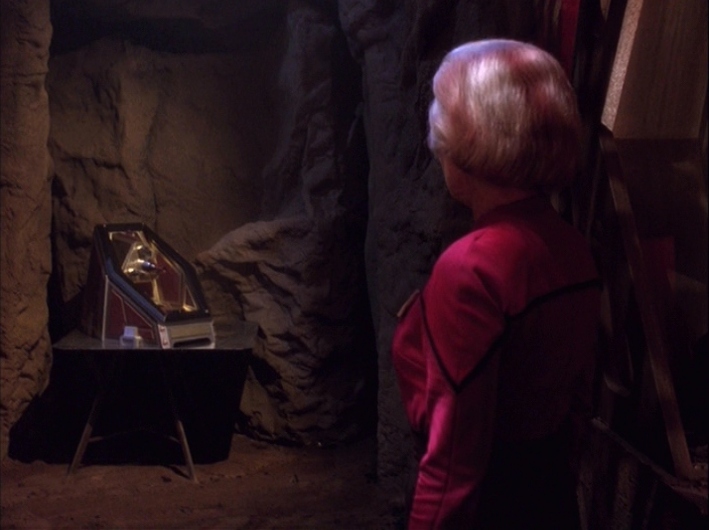If Federation scientists could figure it out then, Federation scientists working from the same concepts, armed with a century more knowledge and technology would easily manage it too and solve the distance-related issues of Voyager or DS9 in no time.
Why "easily" and "in no time"? Why not
eventually, after many failed attempts and other diversions and complications, lacking critical pieces of the puzzle? (Like stable time crystals, for instance.)
The idea the technology could be buried for over 100 years in Trek's world is right up there with Ancient Astronauts.
But we know Section 31 has actively scrubbed all records of itself by the time DS9 rolls around. And I would fully expect they could be rather ruthless in doing so. The very fact that Sloan was unconcerned about revealing himself to Bashir and others suggests that they were quite confident of this ability. (In the end,
too confident. Yet it had clearly worked for them up to then.)
As Odo surmises in "Inquisition" (DS9),
"they've learned to cover their tracks very well"; and as Sisko says in "Inter Arma Enim Silent Leges" (DS9), they're
"very meticulous" about it. Per "When It Rains..."/"Tacking Into The Wind"/"Extreme Measures" (DS9), they had agents at all levels of Starfleet conspiring to help them
"make up fake files" and
"destroy research" they considered threatening to their aims, to the point where eventually their secrets would
"exist only in the minds of a very select group of people." Per "The Dogs Of War" (DS9), even the Federation Council was willing to
"look the other way" when convenient—
"a tidy little arrangement," in Odo's words.
(Also, ancient astronauts are very much a real part of
Trek's world.)
She still did it. And attempted numerous crazy schemes to get home during the run of the series.
As a rule, she steadfastly refused to break with Starfleet directives for expediency's sake, and emphasized this point repeatedly over the course of the series, with "Endgame" (VGR) being the exception that proved it.
The device in "Endgame" which was far more bulky and awkward than the "primitive" technology shown in Discovery.
That device was of Klingon origin, and in any case, I wouldn't call it "far" bulkier...
Why did she have to go to the Klingons? Explicitly, because Starfleet Command had
forbidden such actions. This came up not only in context of "Endgame" (VGR), but other episodes like "Timeless" (VGR), where the future Harry and Chakotay were
"fugitives...the Galaxy's most wanted...on two counts of high treason and conspiracy to violate the Temporal Prime Directive."
And within DSC itself, the tech is portrayed as anything but "primitive." Why exactly do you think they gave Section 31 TNG-style combadges, and had Pike voice surprise over them, if not to telegraph to us that they are a step (or several)
ahead of Our Heroes™ in terms of advancement? (See also: synthesizing Tyler and baby's heads
"down to their neural mapping and genetic codes...not your everyday Federation espionage"; active camouflage and variable-geometry warp nacelles; Terran memory extractor, etc.)
No amount of pedantics make this show fit with the greater whole in anything more than the broadest, X-Men movieverse level of broad strokes.
I find it to fit as well as the rest of
Trek fits together—which is to say, not seamlessly, but better than any fifty-odd-year-old franchise has any right to. Frankly, to my mind, "pedantics" could just as aptly describe your
own exaggeration of every perceived discrepancy into something more severe and egregious than it actually is, or need be viewed as.
Trek continuity may be a glass house, but you're the one casting stones here, so it should hardly come as a shock that you find it broken!
-
MMoM





